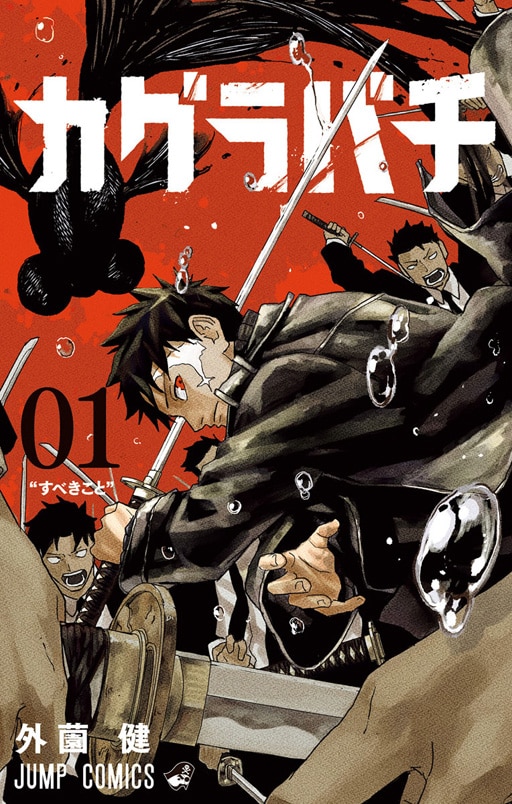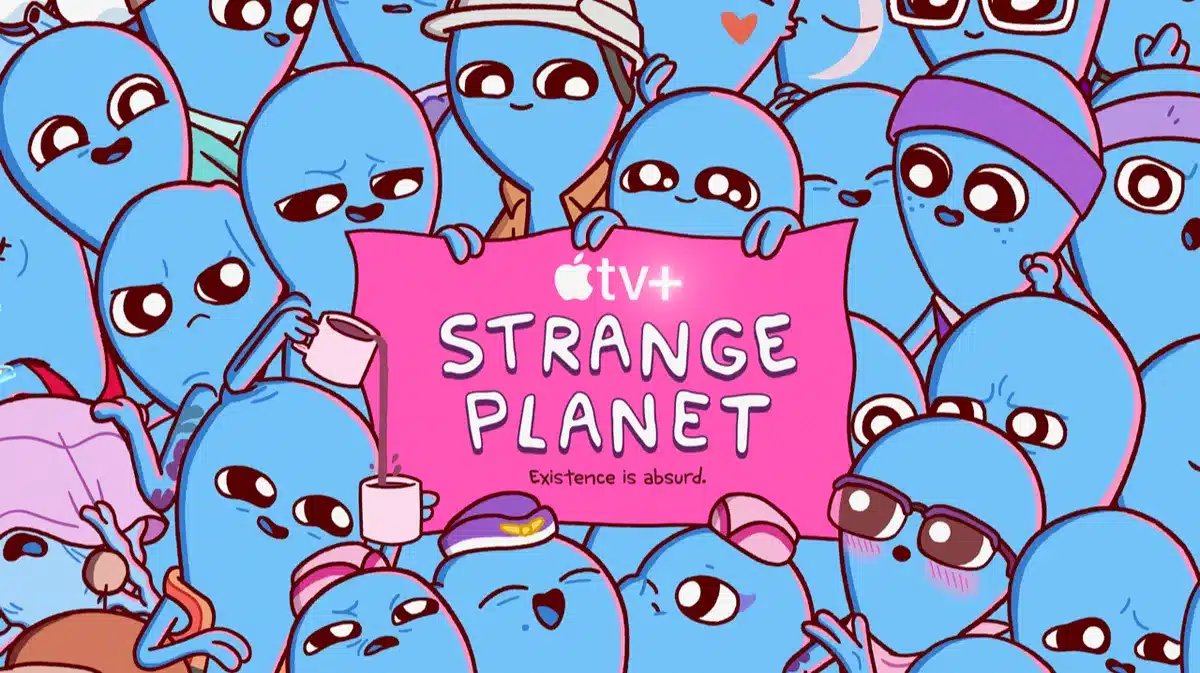Last week, The New Yorker ran a profile of Shonen Jump that also profiled mangaka Takeru Hokazono, creator of Kagurabachi. The piece was written by Matt Alt, an extremely knowledgeable author and manga translator who lives in Japan. Given The New Yorker’s arrays of fact checking, this was probably the most prominent and accurate account of the Japanese manga industry we could read. It touched on all the things: the crushing deadlines mangaka work under, allowing only a few hours off a week; the early deaths of so many prominent creators; the pushback against this system; and why this system works, churning out billion-dollar, chart topping franchise after billion-dollar, chart topping franchise.
I spoke at length about this article on PW’s More to Come Podcast last week, along with Calvin Reid and Kate Fitzsimons, my co-hosts, as we discussed the very successful 2025 Anime NYC, where Hokazono was a guest. Kagurabachi looks primed to be the next Demon Slayer/My Hero Academia, so getting the creator as a guest at a US show early in the run was quite an achievement.
But as I’ve been noting on many podcasts of late, this is the Summer of Anime Awareness, spurred by Netflix announcing that half of its audience watches anime. Coupled with the massive success of Kpop Demon Hunters, Netflix embracing anime on such a huge level is the kind of thing that makes executives who ignored anime/manga off before suddenly realize: it’s already here. The revolution already happened, and they need to play catch up.
We’ve known that at the Beat for a long time, but Alt’s New Yorker piece suggested to me that US publishers are completely unequipped to even begin to fight back against manga’s hold on the youth of today. The article is paywalled, so a few excerpts:
But much as Marvel Comics revived its flagging fortunes by creating the Marvel Cinematic Universe, Jump continues to thrive, in part because of the rise of anime as a fixture of global youth culture. “The licensing business,” Saito told me, “has created a cycle that’s much more powerful than the paper-centric one of the past.”
[…]
Weekly serials are compiled in paperback collections, called tankobon, that are sold in bookstores. Popular series are often licensed to animation companies, which turn them into anime that are streamed around the world. The books promote the shows, and vice versa; a hit series can send tankobon rocketing up the best-seller lists, making the artist, and Shueisha, large sums of money.
[…]
In 2020, “Demon Slayer: Kimetsu no Yaiba—The Movie: Mugen Train,” based on a Jump manga, unexpectedly became the world’s top-grossing film that year, eventually earning upward of half a billion dollars. The “Demon Slayer” universe has brought in more than $6.8 billion since the original manga débuted, in 2016, according to one Japanese business-news outlet. This success wasn’t a fluke. In 2024, six out of the ten top-grossing manga and anime franchises in Japan originated in Weekly Shōnen Jump—and, by one count, so did six out of the ten best-selling graphic novels in the United States.
These are now some of the most sought-after properties on the planet. American platforms such as Netflix, Hulu, Amazon, and Disney have long competed for the foreign rights to Japan’s top animated shows and films. In July, Netflix revealed that fifty per cent of its global subscribers regularly watch anime. Sony recently paid more than a billion dollars for the anime streaming service Crunchyroll, and Blackstone offered $1.7 billion for the digital manga platform Infocom. Jump series have yielded collabs with such disparate entities as Major League Baseball and Dolce & Gabbana—and have inspired tributes from the likes of the Olympic sprinting champion Noah Lyles and the Grammy-winning rapper Megan Thee Stallion.
Again, anyone who reads the Beat regularly – or observes the reading, viewing and fashion habits of American youth – knows that anime is a propelling force of our culture, and manga is the source of much of it.
But laying out the Shonen Jump process – searching for young talents, nurturing new series, and monitoring the success constantly via reader surveys – shows how woefully inadequate the US market is to even begin to compete. “Compete” isn’t even the word. The US comics market doesn’t even want to make a new Batman.
I touched on this in a piece earlier this year, when I looked at long running modes of storytelling, and pointed out that the US comics industry had no incentive for someone to pull an Eiichiro Oda and create their own One Piece that runs for 28 years.
It’s hard to imagine an American cartoonists achieving anything like this. The main reason is simple: it just doesn’t pay enough. Comic strip cartoonists were able to continue telling their tales because newspaper strips were wildly popular in their day and wildly profitable. Jim Davis is worth some $800 million today due to the heyday of Garfield and its continued licensing and merchandising. Popular comics strip artists were millionaires or multi millionaires in their day, and sitting down to draw four panels a day is pretty good work to have a crack at that much money. Japan’s most popular mangaka are also well compensated: Oda makes an estimated $23 million a year from his creation. This kind of money allows them to hire assistants and form studios to make turning out such a high volume of work possible. (I won’t get into the sweatshop aspects of this system:it isn’t great, but it’s how the sausage is made.)
The other reason that American comics don’t really have a path forward for a One Piece-like achievement is just that comics have turned away from the idea of recognizable characters that we visit each day, week or month to high-concept single stories. That’s partly because of The Big Lie – stories must be optimized for media adaptation – but also, creators don’t seem to want to be tied down to one creation for a lengthy amount of time. At least in PRINTED comics. There are lots and lots of long running webcomics, but that’s kind of a whole ‘nother story.
Reading about the Shonen Jump process makes me even sadder that the Big Two of the direct market – Marvel and DC – are so caught up trying to make Spider-Man or Batman exciting for modern audiences, they have no capacity to create new stories and new heroes. Knowing that they will have to give up the rights to character they create for Marvel and DC means that today’s comics creators hardly ever create new characters even for long running series – and retailers wouldn’t support a new superhero series even if the publisher was behind it.
At Image the longest running series by a single creator – Savage Dragon – is seen as something of one-off eccentricity. Most other new series are published in the “media pitch” format: six or eight issues, just enough to spark a movie or a single season of a streaming series. Geoff Johns’ Ghost Machine imprint has said they want to go against this and create series that go on and on – from what I’ve seen they’ve been successful but it’s too early to tell if there will be a breakout.
Scholastic and other US publishers that dominate book sales with kids or YA material have a lucrative system to incentivise creating new franchises. But Dav Pilkey and (borderline cartoonist) Jeff Kinney are outliers in their ability to keep books coming out at a once a year clip. It took Kazu Kibuishi 16 years to finish his nine-book Amulet series.
Webtoons would seem to be the most viable format for new superstar franchises to emerge – and have a similar punishing schedule – but none really have, yet, aside from Solo Leveling. Surprisingly, it may be Instagram that’s the most fertile ground for characters to take hold. Nathan W. Pyle’s Strange Planet has sold a gazillion books and was turned into a cartoon – unfortunately it was on Apple+ so no one saw it.
As I mentioned in my earlier piece that danced around this same topic, I don’t really want US creators to take on the incredibly grueling pace that a weekly Shonen Jump cartoonist has to maintain. But reading that New Yorker article brought home to me once again why manga is eating US comics’ lunch: we have no system for young creators to test their wings and create a new Spider-Man.
Frank Miller was all of 24 years old when he took over Daredevil – the same age Hokazono is now. If a 22 year old comics phenom wandered into a Big Two office today, would s/he even get a shot at a short story, let alone a franchise character? It’s simply unthinkable.
With manga and anime more popular among young creators worldwide now, I don’t doubt that some system or vehicle will emerge to give them their shot at creating the next Naruto. What I do doubt is that it will emerge from anything we consider the “mainstream.”














If you are not paying 100% attention, you are not going to realize this whole “frontier” of the comic book industry is going to have severe problems in the coming years. Even if you are a D or a R, the American culture of what is ok is very conservative. I am residing now in the NE Metropolitan Area, a very blue area. Have you been to a Target or a Wal-Mart lately? Two years ago, both chains had 1000+ Manga SKUs. Today, maybe 30+ at best. The reason, not they were not selling. Both ‘chains’ just became overwhelmed with the complaints and returns, parents not happy with the content.
In this country the tide can turn overnight, as more and more parents question what their kids are reading and watching? By the end of 2026, do not be shocked with a huge change in perception of is Anime/Manga popular in the US. Is it ok for kids?
And remember with Netflix the daily Top 10 lists can be misleading, as they only require a minimum of two minutes of viewing to count as a “view”. This inflates the popularity of content and can give the impression that a show is a massive hit when many viewers may have dropped it after just a few minutes.
For years, Netflix reported on total “hours viewed,” which disproportionately favored longer series. While the company switched to a “views” metric in 2023 (hours viewed divided by total runtime), neither metric reveals how many people actually completed a series. This makes it difficult to gauge true audience engagement.
High-revenue franchises skew the market: As experts note, a few blockbuster properties, such as Pokémon and Demon Slayer, can generate massive revenues across merchandising, movies, and games, creating a misleading impression of widespread profitability. This can hide the fact that many other original anime series and manga titles may be struggling or have very low engagement
Book challenges and school libraries: Conservative organizations and parents, like Moms for Liberty, have increasingly targeted manga in school libraries and book fairs. Titles like My Hero Academia and Assassination Classroom have been removed or challenged over concerns about content deemed age-inappropriate or violent. This has a real impact on accessibility for younger readers and can stigmatize the medium.
So the content deemed unsuitable for younger audiences is a recurring issue. Some parents express concern about the availability of certain manga and anime in general consumer stores, potentially leading to complaints and returns. Retailers, especially those catering to a family audience, react by reducing controversial content or shrinking sections to avoid controversy.
Also this “Big box” stores are constantly analyzing sales performance per square foot. Manga and anime, particularly compared to mainstream books or popular media, do not have the sales velocity required to justify extensive shelf space in all locations.
There is good news, so pay attention. These stores may be adjusting their inventory to focus on certain demographics, such as children’s graphic novels, which tend to have a broader appeal and fewer content-related concerns.
In conclusion, the reduced inventory in stores like Target and Walmart is a reflection of evolving retail strategies, the impact of some parental concerns, and the larger shift toward piracy by individuals who enjoy the product. While it indicates a change in how physical manga and anime are distributed and sold (and not-sold, but stolen), it is a strong warning sign of the possibility that the Anime and Manga market could face an imminent collapse.
Faster then anyone thought possible.
Hi, Heidi,
FANTASTIC article! American print comics aren’t setup to do what manga does so well, as you laid out. The print comics’ audience is predominantly Boomers and Gen-Xers. Most actually want their weekly fix, with some, but not too much, variety. Truly new series don’t do well. The economics aren’t there. We’re looking at a max 250k American comics readers, and a small number of remaining stores, versus millions of anime and manga consumers. $4.99 comics that you read in 10 minutes aren’t a great buy in the age of Crunychroll, and Netflix, where you have 1,000s of hours of Anime for the cost of 5 comics. You include video games and livestreaming, and the inconvenient truth is that print comics in their current form lost this fight over 20 years ago. Look around you the next time you ride the bus or train. Very few people consume content in print anymore. They’re on their phones, reading, listening to music, audiobooks, and podcasts, looking at YouTube, or playing games. American print comics aren’t going anywhere, but in their current form they’re no longer mainstream, although their characters and stories are in other mediums. “Arkham Asylum” is a $2.5 billion dollar franchise. The Batman comic book? Not so much. Cheers!
@ger- The Global Anime and Manga market will be fine. And most of the kids (teenagers) that I know get their anime and manga online (Amazon, Netflix,etc.). Anecdotal, I know, but this seems to be the case in general.
Also keep in mind that the 80/20 rule applies to everything.
“The 80/20 rule, also known as the Pareto Principle, states that roughly 80% of outcomes result from 20% of causes. This principle is often used in business and productivity to identify the most impactful factors to focus on for maximum results.”
Only 20% of Anime and Manga are responsible for company profits. Same thing happens in Film, Gaming, etc. So the Global Anime and Manga markets are fine. America is actually a small part of that. The Asian markets are much larger. Cheers!
Ger and Derrick: I actually toured both a Target and a Walmart today and will report findings.
The window of what American publishers are willing to take a chance on is so incredibly narrow when it comes to original stories. I’ve pitched upwards of 30 original projects to publishers over the past three years and one of the most common rejections I get is that the stories don’t fit a lane that’s already established. But when you do bring them something designed to fit an existing lane, they say it’s too similar! As creators, we want to bring them unique books with long-running series potential, but there’s very little tangible interest in that out there and even less support on the rare occasions when they do pick something up. I’d be thrilled to see our field take some positive steps towards the manga model, though at the moment that feels pretty hard to fathom.
Netflix should have a “percentage hours viewed per episode average” count in order to make things comparable fairly.
Good analysis, but…
Now this is all likely going to change eventually, sooner than later. Baby boomers are retiring now and will die soon, many of these legacy characters will fall into public domain. So either you create new IPs or you dies.
In reality, the US market is what it is due to lack of ownership from the creators. The reason Jim Davis or Erik Larsen make a decent living is that they own their characters.
The European model (which you should cover in a similar article) is a good median point between US and Japan, we have ownership but we go at our own pace far from the studio grinding machine that Japan is. Also we consider Bande Dessinée an artistic endeavour, not just churning soap. Still we have powerhouses (Astérix, Smurfs, etc) and small publishers bring out new creators to the light all the time.
This is a great read that really brings home why it’s a mistake to look at comics solely through the lens of the US direct market. There are huge opportunities to be had outside of that ecosystem, something Comic Book UK is looking at as we move forward with plans to drive growth in UK comics. We’ve just put together a profile on weekly UK comic The Phoenix – arguably a good proof of concept about what is possible. Building on successes like this and creating the conditions for more has to be the way forward.
https://comicbookuk.com/the-phoenix-a-trailblazer-for-the-future-of-british-comics/
This is more about the content rather than the production side, (though per some of Heidi’s observations, I think the two are very related:) one of the things I like the most about 60s Marvel (especially Jack and Steve’s comics) is the feeling that you’re being pelted left and right with new characters and concepts at an incredible rate. That run of Fantastic Four issues where Black Panther, the Inhumans, Silver Surfer and Galactus are introduced back to back to back sticks in my mind. I haven’t regularly read American comics in about 10 years, so maybe my sense of this is out of date, but the only place I’m getting that sense of almost aggressive creativity today is in anime and manga. One of my favorite things about DanDaDan, for instance, is how quickly and efficiently characters and concepts get introduced. (And just as I’d say with Steve and Jack: what characters! What concepts!) American comics of the last few decades have felt stingy with their ideas by comparison. Part of that is that the trend over here for the last few decades has been towards slower, decompressed stories, which I’m sure some people appreciate, but for me, you can’t beat the headlong rush of discovering something new on every page.
This article says “As I mentioned in my earlier piece that danced around this same topic, I don’t really want US creators to take on the incredibly grueling pace that a weekly Shonen Jump cartoonist has to maintain.” The last one says “I won’t get into the sweatshop aspects of this system. It isn’t great, but it’s how the sausage is made.”
I think it’s probably worth getting into that if you’re going to make every other point these two articles make.
Aside from the fact that these are all comics and the US doesn’t need to beat Japan’s market share for good comics to exist (very weird undercurrent to this piece! why does Marvel need to fight Viz and Kodansha back like more sales of One Piece mean Spider-Man will die?), the guy making Demon Slayer is the exception in a field where all of his assistants are grinding away for peanuts, hoping to one day make their own book (that they’ll never have time to make). Let’s actually talk about what that pace means for the mental health of the people who have to keep it. Let’s actually talk about what life is like somebody churning out manga that doesn’t get popular enough to become an anime.
Because if we aren’t talking about that beyond acknowledging that it’s something we should be talking about, we aren’t talking about anything and this story is about as useful as the reposted press releases next to it on the homepage.
I agree just a bit with Pugsly. I understand keeping an article to the intended scope and all that but it felt weird to have it mentioned at all only to have it said that we’re not talking about this. I would really like to know much more about that part of it because its a real part of the story. I don’t know how you disentangle the conditions the art is made in from what the art is.
Agree with pugsly and I’d like to point out kpop demon hunters is not anime. It’s an American lead movie made by an American studio by Americans. Just because they’re Asian does not mean it’s anime.
Hi Heidi! Interesting article. I once told Random House that they should look into the Japanese Media Mix and, to offset slowing readership and loss of bookstores in the US for trade fiction, make their own film studios to turn their books into movies and tv shows. (Because, as a New York industry run by women, what better way to keep the profits in-house and also keep elevating women’s voices and the arts through actors and film professionals who wanted nothing to do with Hollywood?)
Also, to invest more in merchandizing because Japan does crazy amounts of revenue capture from one property with that. I was laughed at and told it would never happen. That was about ten years ago. And now…? The MCU, Where the Crawdads Sing, and Heartstopper has changed all that, just like I had said.
I actually foresee the next problem being market glut, actually. More people want to get into the game, there’s overpaying for distribution licenses but then dilution of quality and viewers as things spread across platforms with paywalls. It’s going to be like the 1980s video game collapse.
I think, too, when speaking about the US comics scene and its inflexibility, one HAS to look at small press vs large and also how women have typically been pushed out as readers and creators. The recent mainstream manga coverage leaves out women, their titles of choice, and their contributions almost entirely. The recent NYT article about how DBZ influenced western cinema completely left out that Sailor Moon arguably influenced it much more, but specifically around the inclusion of and storytelling about female characters. (But I mean, Lupin III and the space opera genre probably wins overall, LBR).
Anyway, from my perspective as a millennial, manga culture and its economy found success by being a predominantly queer, female, and neurodivergent space. We liked that manga and anime showed a non-Christian, non-white, feminist (or at least women-appreciating) way of life, with various body and personality types so readily on offer for any genre of show. What will happen when the mainstream tries to take hold of that? I genuinely don’t know, and I’m curious to see how that will all play out in these post-pandemic years. Will we end up with more lolipop cigarettes? Will the mainstream give up? Or will the OG fracture off like with indie music and head back underground? We’ll see, I suppose!
I’m just glad so many cons are non profits and are going to stay that way. Wish we had more non-profit comics presses. That’d change the game big time…
Comments are closed.